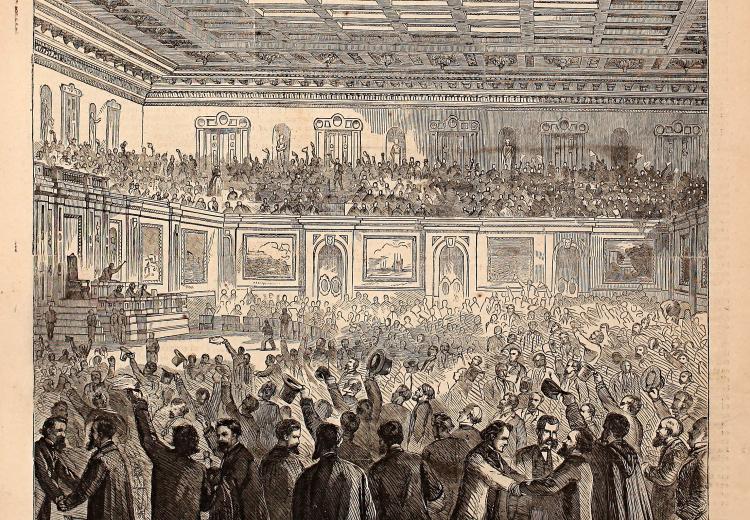Media Resource
BackStory: How Reconstruction Transformed the Constitution

Photo caption
Harper's Weekly cartoon depicting celebration in the House of Representatives after adoption of the Thirteenth Amendment, February 18, 1865.
In this episode of BackStory entitled "How Reconstruction Transformed the Constitution," host Ed Ayers speaks with Pulitzer-prize winning historian Eric Foner about Reconstruction and how it served as a "second founding" of the United States.
A full transcript can be found at the BackStory website.
Below, you can find comprehension and discussion questions about the episode, as well as EDSITEment resources about Reconstruction and its legacies.
Comprehension Questions (with timestamps)
Discussion Questions and Activities
EDSITEment Resources
About BackStory
Materials & Media
Related on EDSITEment
Teacher's Guide
African American History and Culture in the United States
Lesson Plan
